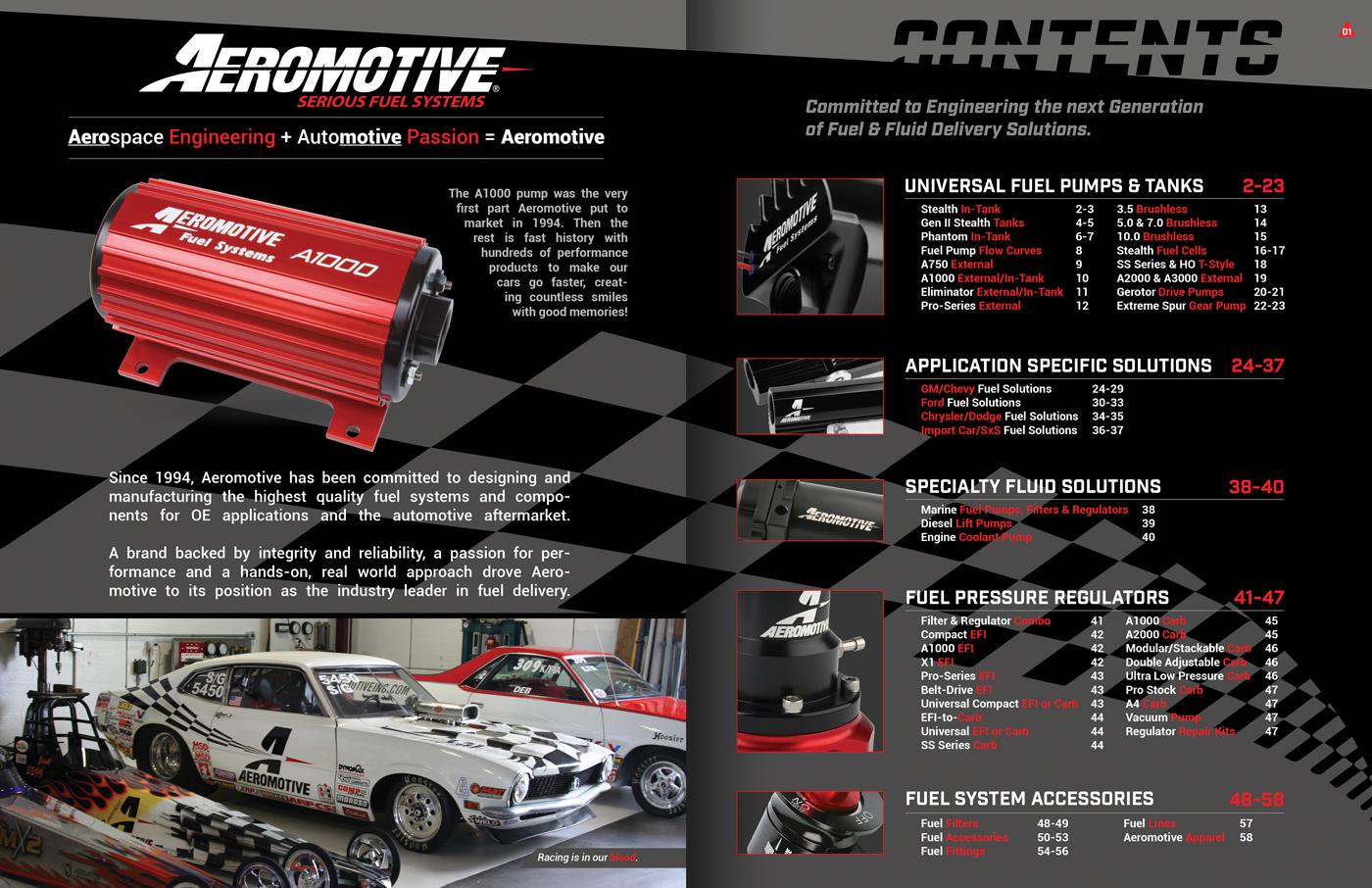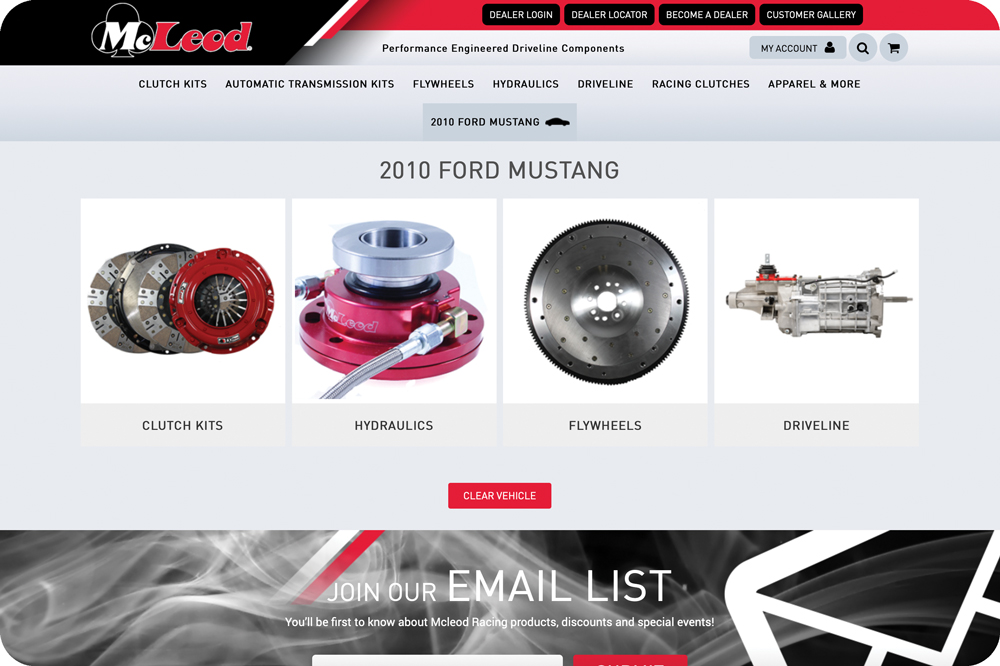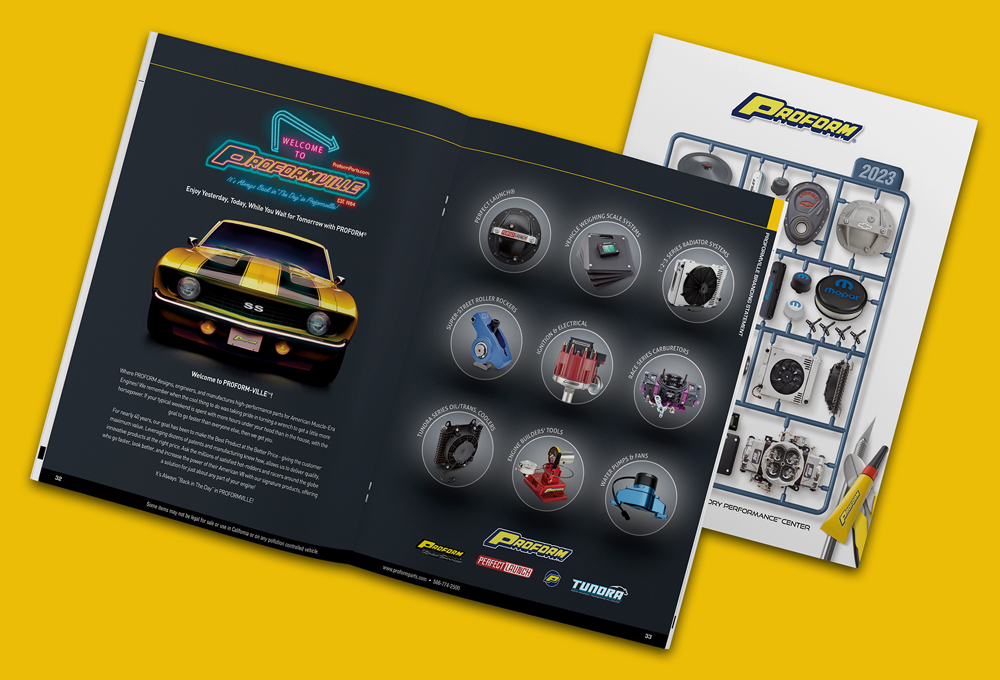Ask the Experts: Are Catalogs Still Effective?

“The paper catalog, in my opinion, will last for quite a while,” said Aeromotive’s Jeff Stacy. “Sometimes as an industry we try to overcomplicate things. We have to look at what built this industry besides well-engineered, well-built parts, and it was the simple promotion of those parts.”
Catalogs have been a staple in the racing parts sector for decades. But, are they still valuable to buyers? The answer depends on who you’re asking and, to a degree, the age of their customers.
Given the steady decline of print media in the wake of digital media’s growth, it should come as no surprise that racing performance parts catalogs are being affected as well. Long a fixture at trade shows, manufacturers’ midways, and parts counters, these encyclopedias of parts numbers and fitment guides are in a period of transition.
My Generation
“Our catalog is an extension of our product,” said Jeff Stacy of Aeromotive, Lenexa, Kansas. “We try and build a catalog that is cosmetically appealing, easy to use, and has the information in it that our customers are looking for. We think that helps the perception of quality of Aeromotive.”
Stacy is a firm believer in the power of the print catalog. “For us, the catalog is something we can give away at trade shows, races, and events that stays with the consumer. You can get lost in what’s on the Internet. A paper catalog is something of a reference point.”
He also noted that “a lot of our business is done through distribution, so if you go to a Summit, Jegs, Motor State, or Turn 14, these guys still use paper catalogs along with digital assets.”
One reason Aeromotive is more “catalog-driven,” Stacy said, “is because our product is not year/make/model. The bulk of our business is universal. If a customer says, ‘I have a 1979 Camaro. What fuel pump does Aeromotive offer for it?’ Well, everything we make will fit on a 1979 Camaro.”
He acknowledged that demographics play a role in the decision to print catalogs. “The catalog is maybe not the best way to reach 18–30-year-olds, but most of the 18–30-year-olds don’t have the money that 31–60-year-olds do. So we’re going to continue to cater to my generation because we’re the guys spending a lot of money. There are younger kids that do spend a lot of money on cars, but it’s not as prevalent. When you go all digital, you alienate, at least in my opinion, 50% of your customer base.
“That’s going to change,” he added. “We’re the dying breed. In 30 years, everything will be digital. But for now, we will continue to invest a lot of money in our catalog.”
Always Actively Current
“With technology being our friend these days, there should be no reason why we couldn’t have the catalog online,” said Krista Baldwin of the Wharton Automotive Group, Anaheim, California. That’s why the company, which includes McLeod Racing, FTI Performance, and Silver Sport Transmissions, “is implementing new websites for each company, and on the website there’s an interactive catalog. You’ll be able to search year/make/model, specific products, or however you want to search on your phone.”
The McLeod website launched two years ago, “and we stopped making catalogs and threw it all online,” Baldwin said. After the change-over, “there was a huge influx of sales on the web side for us. Since the interface is very user friendly, our customers are able to navigate the website quickly and make the sale.” The Silver Sport Transmissions site is scheduled to go live this summer, and the FTI site will be up later this year. FTI will continue to offer a print catalog until its site is operational.

McLeod does still print a mini-catalog, “a quick overview of the clutches and driveline components we offer,” Baldwin said. “We use this at all the events we attend as a tool to differentiate the discs that are available based on the horsepower rating and the use of the vehicle.”
The ability to constantly update the catalogs is among the advantages to having them online, Baldwin said. “On the McLeod side, I’ve probably uploaded a new product every month or two, so it’s always actively current. Whereas with a catalog, if you buy 5,000 of them, you can’t make a change until those 5,000 are gone.”
There’s also a cost benefit to not printing a catalog, Baldwin noted, as well as “the environmental benefit of not printing all those pages. And if you’re not throwing a catalog into every product box, it saves you on shipping costs. It’s just very economically friendly.”
Nothing but Good Exposure
Many companies are going through this transitional period by offering printed and digital catalogs. Supertech of Morgan Hill, California, prints a catalog that it takes to trade shows and sends to a mailing list of customers. That same catalog, in PDF form, is downloadable from Supertech’s website. “We also have a scannable business card with a QR code” for shows, explained Martin Tagliavini. “Our catalogs are getting a little bit large in size, and sometimes people don’t want to carry a full catalog at a show. With the business card they can download the print version of the catalog with the QR code.”
PROFORM Parts of Warren, Michigan, also takes the multimedia approach. “We have a printed catalog that we mail for free on request for anybody in the US and Canada,” said Ryan Salata. “We also have a PDF version of the catalog on our website and a digital flip book with a unique URL.” Like Supertech, PROFORM takes QR-coded business cards to trade shows for post-show catalog downloads.
Product education is a big reason why both of these companies continue to invest in catalogs. “I don’t think our catalog is used as an ordering tool,” said Tagliavini. “It’s used more for information: what the product is, how it’s made, the differences in products, why choose one versus the other.”
“A catalog allows the customer to be exposed to your entire product line, whether or not that’s what they’re looking for,” said Salata. “If they’re looking for rockers, but they happen to come across carbs just flipping through the pages, that’s nothing but good exposure.”
Both recognized that customer demographics play a role in continuing to produce the print catalogs.

“We want to extend [the catalog] to everybody because we know our demographic is changing, and we want to make sure that we cater to a broad demographic, not just to the generational demographic that’s going digital,” Tagliavini said. “We still want to cater to our core group of engine builders who were with us 20 years ago.” Those builders, he said, want the print catalog.
“Our customer base tends to skew a little bit older—over 40—and older people like the paper catalogs more than the younger crowd,” Salata said.
Both companies print fewer catalogs now than in the past, but neither is giving them up altogether.
“Have you noticed Amazon has started to print catalogs around Christmas time?” Salata pointed out. “If Amazon does it, it’s probably not a bad idea.”
“If the time comes when we take 1,000 catalogs to a trade show and come back with 900, then it is time to re-evaluate the catalog printing,” Tagliavini said. “But so far we’ve had success with our catalogs.”
PRI Catalog Poll
Wondering if catalogs are still a worthwhile investment, we spoke to manufacturers of race parts, but we also polled PRI readers and asked them, “In today’s digital age, should manufacturers still offer printed catalogs?” Of the almost 300 votes we received, an astounding 73% confirmed their desire for manufacturers to continue to offer catalogs made from paper.
Here are some of the comments we received from survey respondents:
• “Tangible is visible, and actionable.”
• “In my opinion, there’s a time and place where print comes into play. If you’re a manufacturer that’s working with multiple WDs and sales groups, handing out literature at trade shows, yes. If you’re only focused on your E-comm site, then no. It’s like investing—you have to diversify based on your wants/needs and most importantly on where your potential/current clients have weak spots in their marketing.”
• “I love flipping through a paper catalog…. However, I think it’s a waste of resources considering how many people are online. So, if you have a robust online catalog my answer is ‘no.’ If you do not have an online catalog my answer is ‘yes.’ We might need a ‘maybe’ option.”
• “As a retailer I’m more inclined to show a customer products digitally, but prefer to have printed application guides for part numbers and ease of writing an estimate.”
• “Catalogs may be out-dated but they last long after the power goes out. People have lost touch with print. I miss getting my Jegs and Summit catalogs. They are also a great reference for builders and an easy way to get a young gearhead involved.”
• “There are still people who prefer printed catalogs over digital ones. The age of the consumer really plays a role in this decision. Older consumers will generally prefer a printed catalog while digital natives will gravitate toward virtual versions.”
• “When you know what you want, digital is efficient. When exploring for new options/ideas print is best.”
• “Special or targeted materials only, not a full library. It’s 2023, not 1973.”
Sources
Aeromotive
aeromotiveinc.com
PROFORM Parts
proformparts.com
Supertech
supertechperformance.com
Wharton Automotive Group/McLeod Racing
mcleodracing.com
 MEMBERSHIP LOGIN
MEMBERSHIP LOGIN JOIN PRI
JOIN PRI


